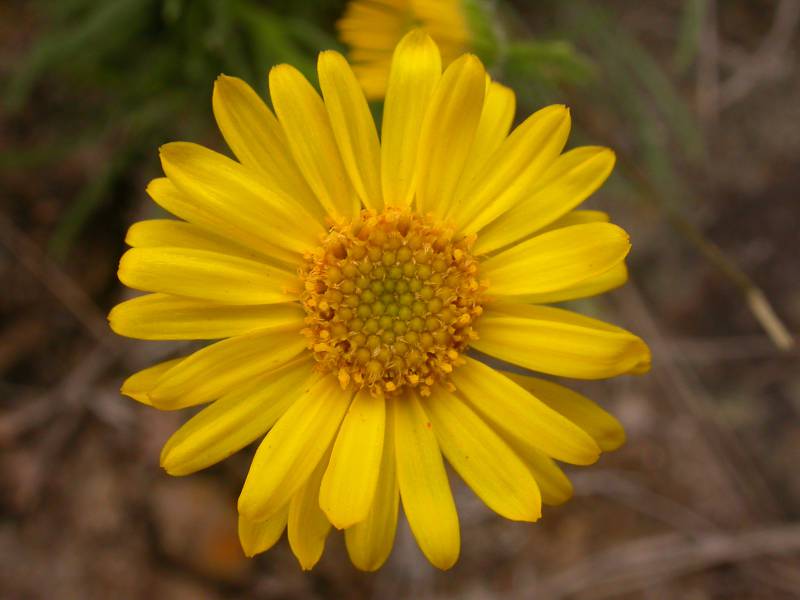Erigeron acris
Erigeron linearis
bitter fleabane
desert yellow daisy, lineleaf fleabane
Basal leaves oblanceolate or spatulate, the cauline ones ample to strongly reduced, lance-ovate to linear-oblong;
Bases of stems and basal leaves hardened and enlarged, straw-colored;
leaves linear, 1.5-9 cm. long and 0.5-3 mm. wide, mostly basal.
Heads usually several on somewhat glandular, curved peduncles;
involucral bracts tapered and pointed;
rays pistillate, numerous, erect, inconspicuous, white, up to 4 mm. long and 0.4 mm. wide; inner pistillate flowers rayless;
pappus surpassing the disk flowers.
Heads solitary or few on each stem, the disk 8-13 mm. wide;
involucre 4-7 mm. high;
rays 15-45, yellow, 4-11 mm. long; disk corollas 3.5-5.3 mm. long, yellow;
pappus of 10-20 bristles and some outer scales.
Erigeron acris
Erigeron linearis
- Local floras:
BC,
OR,
WA
- Local Web sites:
Flora NW,
PNW Herbaria
WildflowerSearch
iNaturalist (observations)
USDA Plants Database
- LBJ Wildflower Center
- SEINet
- Plants of the World Online
- Encyclopedia of Life
- Wikipedia
- Google Image Search
- Local floras:
BC,
CA,
OR,
WA
- Local Web sites:
CalFlora,
CalPhotos,
Flora NW,
PNW Herbaria,
Turner Photog.
WildflowerSearch
iNaturalist (observations)
USDA Plants Database
- LBJ Wildflower Center
- SEINet
- Plants of the World Online
- Encyclopedia of Life
- Wikipedia
- Google Image Search



